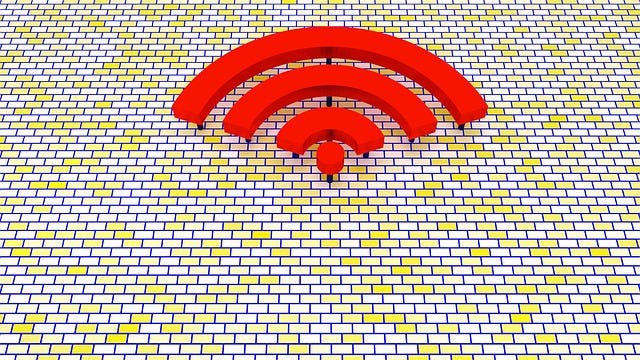Improving WiFi Connections in High-Density EnvironmentsImproving WiFi Connections in High-Density Environments
New Wi-Fi Alliance certification aims to improve connection setup in WiFi networks.
October 13, 2017

In a recent article, I discussed the shortcomings of improvised client-steering techniques used for band steering, load balancing, and sticky client prevention in WiFi networks, and how the Wi-Fi Alliance is working to address them. Last month, the alliance launched a certification called Wi-Fi Certified Agile Multiband. It ratifies an intelligent client-steering protocol based on IEEE 802.11k and 802.11v standards.
Concurrently, the Wi-Fi Alliance has announced another certification called Wi-Fi Certified Optimized Connectivity, which is designed to optimize client connection setup in high density environments and is based on the IEEE 802.11ai standard that was ratified earlier this year. The certification introduces two main enhancements: probing flood reduction during AP discovery performed by WiFi clients and fast initial link setup to the selected AP after discovery.
Probing flood
There are situations when a number of users simultaneously enter a WiFi coverage area. For example, when a flight or a train arrives, a large number of people enter the WiFi coverage area at the airport or the train station gate at the same time, and their WiFi devices start scanning for APs. Clients scan for APs by sending probe request frames and APs respond with probe response frames. Clients send probe requests for networks (SSIDs) configured in WiFi profile. If an AP supports the specific SSID, it responds to the client with the probe response.
Clients also send "wildcard" probe requests to which multiple APs respond with probe responses. The individual probe frames contain small amounts of data, but because they are transmitted at a low date rate, they consume long air time. The net effect is that the shared wireless medium gets filled with probe request/response transmissions. This adversely affects WiFi throughput of already connected clients.
Optimized Connectivity provides several enhancements to reduce probing traffic. In the traditional IEEE 802.11 protocol, a probe response from the AP is sent to the unicast address of the client that requested it. In Optimized Connectivity, the probe response is sent to the broadcast address so that all clients can receive it and discover that AP. In the past, the typical interval at which an AP sends periodic beacons advertising itself is 100 milliseconds. This interval is too long for clients as they have to scan multiple channels in short time. So, clients probe without waiting for beacons.

wifi-pixabay17.jpg
Optimized Connectivity reduces the AP advertising interval from 100 ms to just 20 ms to facilitate quicker discovery without probing. To avoid frequent advertisements consuming large airtime, a shorter beacon format called FILS Discovery is introduced for advertisements between normal 100 ms beacons. In this technology, the AP also has the option to include information about neighboring APs (called Reduced Neighbor Report) in beacons, fast initial link setup discovery and probe responses. This facilitates quicker discovery of neighboring APs for clients.
Optimized Connectivity also requires clients to wait for 20 ms upon visiting a channel before starting to probe. An exception to this rule is allowed when the client knows some SSIDs to be hidden, i.e., not advertised in beacons and FILS Discovery frames.
There are additional inefficiencies in traditional probing that this technology addresses. For example, if a client does not receive a probe response from an AP before it switches channels to discover other APs, the late probe response results in wasteful wireless transmission. To add to the problem, since the AP does not receive MAC layer ACK from the client for that probe response, it retransmits it, causing another wasted transmission. To avoid wasting wireless capacity, the client can now communicate in the probe request to the AP how long it will stay on that channel.
These types of features in Optimized Connectivity are designed to facilitate AP and client to limit probing traffic during the AP discovery phase. After the discovery phase, client selects an AP to connect to and initiates connection setup to the selected AP. The program also introduces enhancements to speed up this connection setup as follows.
Fast initial link setup
In today's WiFi networks, at the entry point of the WiFi coverage, a client must perform a full connection establishment procedure with the AP to access the network. This action consists of a number of steps such as L2 authentication and association, EAP authentication, EAPOL, and DHCP. This activity generates many frames in both directions over the wireless link. Optimized Connectivity introduces Fast Initial Link Setup (FILS) improvement based on the IETF's EAP re-authentication protocol (ERP). With FILS, the initial connection setup can be completed in just four frames transmitted on the wireless link.
ERP enables fast authentication by remembering at the client and the backend AAA server the past authentication state established at an earlier point in time. Remembering this state allows for quick client admission thereby eliminating the entire EAP authentication from the current connection setup. Notably, EAP authentication is usually the biggest contributor to connection setup latency. Further, FILS introduces piggybacking of ERP and EAPOL messages on L2 authentication and association messages. It performs DHCP address acquisition in parallel with the L2 authentication and association steps.
Once the initial connection is established, subsequent roaming between APs is achieved using techniques that are already popular and available in today’s WiFi networks such as 802.11r Fast Transition.
While I used an airport and train station example at the beginning to describe the motivation behind Optimized Connectivity -- called the “Tokyo station” scenario in the standards community – the program is also beneficial in other crowded environments such as stadiums, malls, and movie theaters.
Countering LAA-LTE
The Wi-Fi Alliance’s interest in improving public WiFi performance is in part motivated by the desire to stand up to License Assisted Access LTE technology. LAA-LTE allows operators and service providers to operate LTE wireless access networks in the 5 GHz unlicensed spectrum. One of the benefits cited for LAA-LTE is its efficient air interface that performs better in high-density networks compared to traditional WiFi. However, LAA-LTE requires a leg in the licensed spectrum to support its control channel; WiFi does not require any licensed spectrum at all.
By introducing features that make WiFi air interfaces more efficient, WiFi can remain a viable technology for public wireless access. Expect to see more such enhancements in the future, particularly to align with mainstream adoption of 802.11ax.
About the Author
You May Also Like




